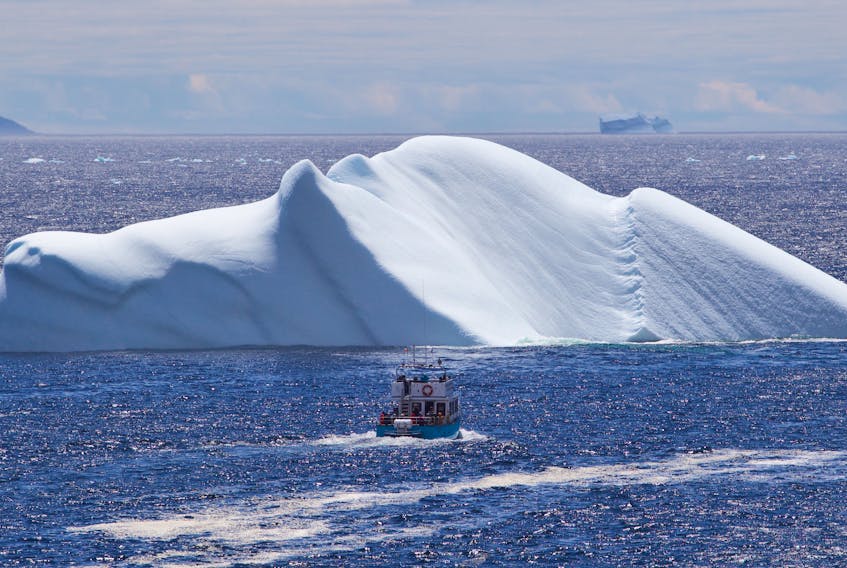ST. JOHN'S, N.L. — The sight of an iceberg outside The Narrows of St. John’s harbour last week had hordes of people rushing to Signal Hill, the south side and Cape Spear to get a photo before it floated away.
Some huge and beautiful icebergs have also been spotted in other parts of the province, from the Great Northern Peninsula down to the Bonavista Peninsula.
If you missed them, there’s good news.
According to weather experts, it’s only the beginning of what is expected to be a busy iceberg season for the province.
“It looks like the iceberg season is off to a bit of an early start this year, especially along the east coast of Newfoundland,” SaltWire Network chief meteorologist Cindy Day said Friday.
“It appears the icebergs weren’t trapped in sea ice, so they’re starting to drift down the Newfoundland coast sooner.”
Day said many of the icebergs are being freed from the sea ice as a result of strong northeast winds produced by a stationary low that’s been sitting over Greenland.
“That seems to be the trend for the next little while,” she said.
“It’s going to continue to bring that ice down.”
Environment and Climate Change Canada (ECCC) is tracking more than 1,200 icebergs from about as far north as Goose Bay to near 40.5N degrees south of Newfoundland.
Doug Leonard, senior ice forecaster for the Meteorological Service of Canada, said sea ice transports and protects icebergs on their journey from Greenland, across northern Baffin Bay, then down the Labrador coast to Newfoundland.
“The extent of the sea ice this year was larger than climatologically normal in waters off of Newfoundland. Because of this, there are more icebergs than regular in the waters off of Newfoundland and Labrador,” Leonard said, adding that warmer temperatures, along with the winds, have caused much of the sea ice to melt.
“It’s expected that above-normal iceberg viewing conditions will continue for this spring.”
Leonard said below-normal temperatures are probably going to occur in May in the region, and there are still lots of icebergs observed in the waters north and northeast of Newfoundland.
He said persistent winds earlier this week increased the likelihood of seeing icebergs along the coastal regions of northeastern Newfoundland.
Twitter: TelyRosie
Related









